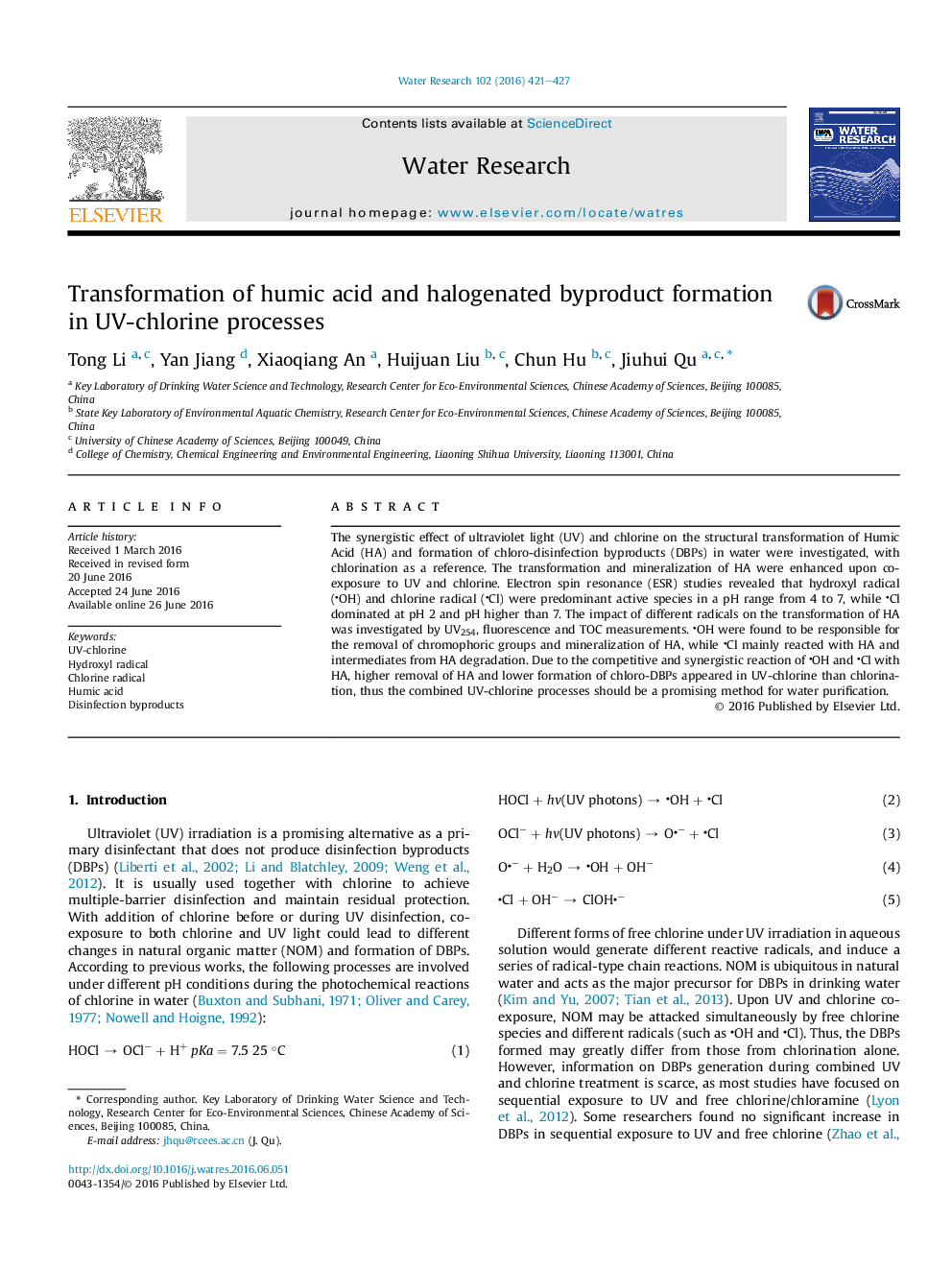| Article ID | Journal | Published Year | Pages | File Type |
|---|---|---|---|---|
| 4480872 | Water Research | 2016 | 7 Pages |
•Mineralization of HA is over 60% at pH 7 during UV-chlorine processes.•The formation and oxidation process of OH and Cl radicals is completed in 5 min.•The main reactive species are OH and Cl radicals, resulting in less DBP formation.•The synergistic reaction of OH and Cl with HA lead to different intermediates.
The synergistic effect of ultraviolet light (UV) and chlorine on the structural transformation of Humic Acid (HA) and formation of chloro-disinfection byproducts (DBPs) in water were investigated, with chlorination as a reference. The transformation and mineralization of HA were enhanced upon co-exposure to UV and chlorine. Electron spin resonance (ESR) studies revealed that hydroxyl radical (OH) and chlorine radical (Cl) were predominant active species in a pH range from 4 to 7, while Cl dominated at pH 2 and pH higher than 7. The impact of different radicals on the transformation of HA was investigated by UV254, fluorescence and TOC measurements. OH were found to be responsible for the removal of chromophoric groups and mineralization of HA, while Cl mainly reacted with HA and intermediates from HA degradation. Due to the competitive and synergistic reaction of OH and Cl with HA, higher removal of HA and lower formation of chloro-DBPs appeared in UV-chlorine than chlorination, thus the combined UV-chlorine processes should be a promising method for water purification.
Graphical abstractFigure optionsDownload full-size imageDownload high-quality image (189 K)Download as PowerPoint slide
